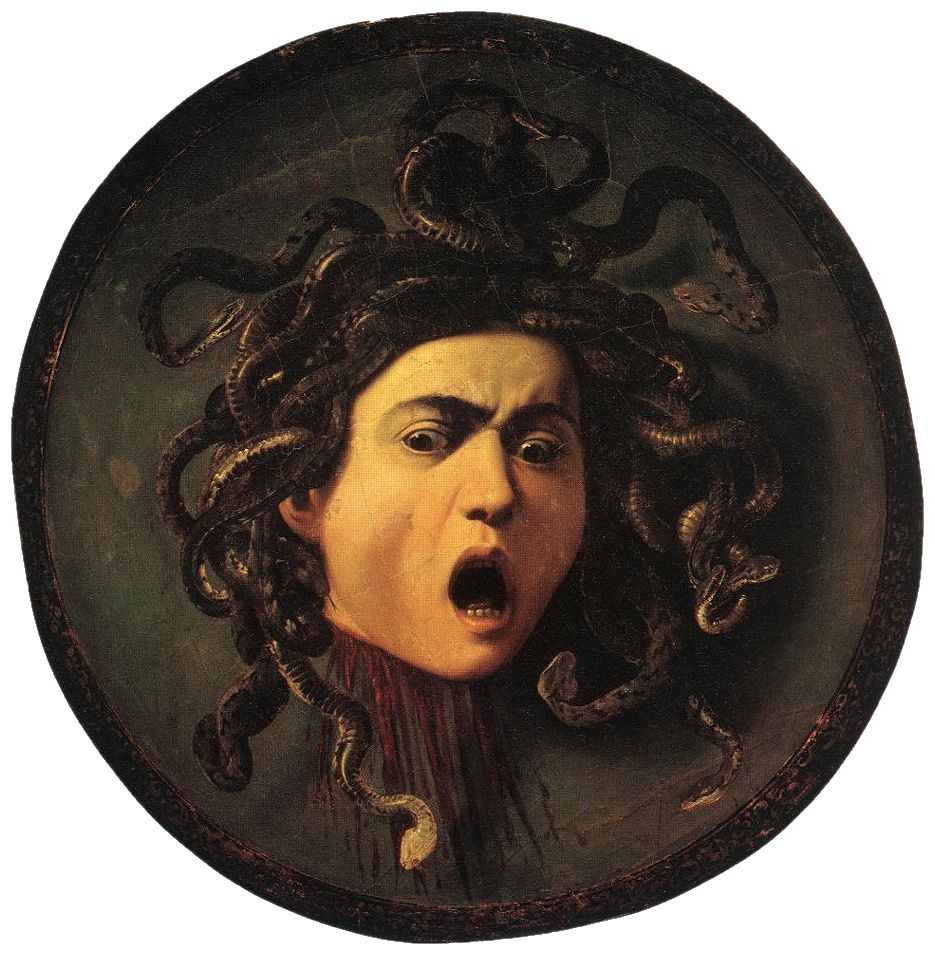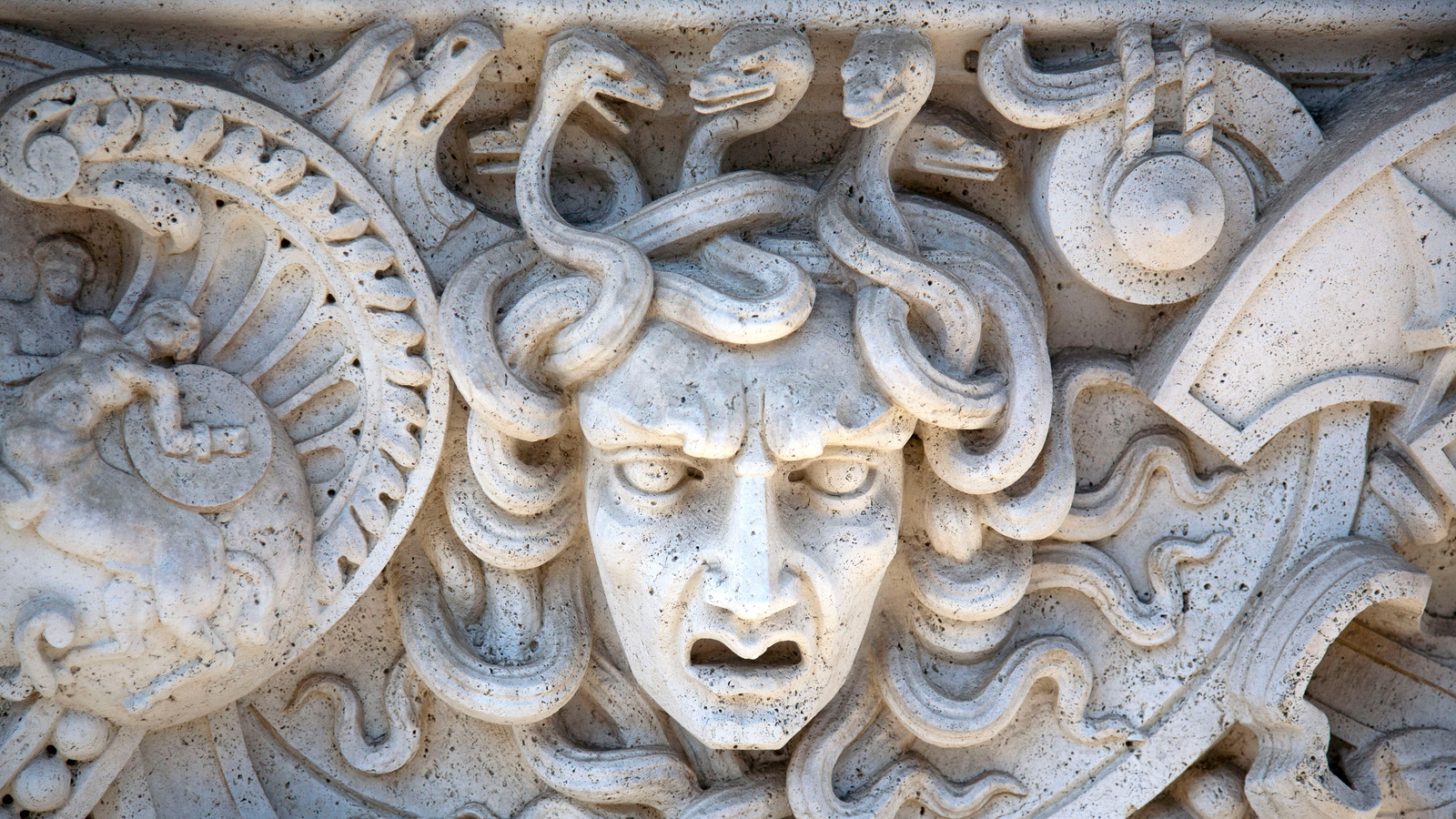Who Assaulted Medusa - On the wall of honor in the Uffizi Gallery in Florence hangs a Caravaggio painting of a curvy woman running. Its plot is so majestic and terrifying that 16th-century poet Gaspare Murtola once wrote, "Run, for if your eyes turn to stone, he will turn you to stone." Medusa is, of course, captured the moment the creature, with its bared teeth, twisted serpentine mane, and severed head continues to bleed, realizes that it is disembodied.
Society has admired the imagination of ancient Greece since the dawn of Western civilization, when myths were created with fire and stone. Tales of gods, titans and giants fill children's tales, while a wide variety of mythical monsters captivate audiences on the big screen. However, there is probably no female character as famous as Medusa, the monster who can turn men to stone with just one look. From the sleazy Powerpuff Girls character to the poignant allegory of British Prime Minister Margaret Thatcher in UB40's hit Lady Medusa, the legend of Medusa lives on in modern pop culture. The character has resurfaced in films over the past two decades, mostly in glamorous guises: Natalya Vodianova provided major supermodel power in the 2010 remake of Clash of the Titans, and Uma Thurman was especially charming in Percy Jackson and the Olympians: The Olympians. played a role. Lightning Thief. Even the House of Versace took inspiration from the Gorgon, placing a stunning (damn) version at the heart of its iconic logo. Here she sits with her long locks surrounded by Greek keys.
Who Assaulted Medusa

Unlike other characters in Greek mythology, most of us know the details of Medusa's legend, even if we don't remember it. A quick character drawing can include snakes, eyes of death, and the taste of doom. In Literature and Seduction, Sybil Baumbach argues that this myth has survived in part because of our growing appetite for grandiose narratives that often revolve around the seduction of a dangerous woman. Medusa is now "a multifaceted figure of intoxication, numbness, and fascination." A quick Google search will turn up no objections: most images range from a woman with snake hair (see Rihanna's GQ cover) to a monstrous severed head bleeding.
Statue Of Medusa With The Head Of Perseus Will Be Displayed Outside Nyc Criminal Court To Shame Sexual Abusers, Here's Why The Greek Myth Stands So Significant In The #metoo Era (view
In the ancient world, Medusa was just as multidimensional. Early pottery and carvings depict him as Gorgon, but this gradually changed. The first person to properly explore its origin story in literature was the Roman poet Ovid, who detailed the Metamorphoses in the 8th century AD. According to Ovid, Medusa was once a beautiful girl who was the only mortal daughter of three sisters known as the Gorgons. Her beauty attracted the attention of the sea god Poseidon, who raped her in the temple of Athena. Enraged at the desecration of her temple, Athena transforms Medusa into a monster with the deadly ability to turn anyone who sees her face to stone. However, the popular retelling of the myth focuses on what happens next and the main character of Perseus. The demigod Polydectes was sent by King Serifos to search for Medusa's head. Using a reflective bronze shield to shield her eyes, Perseus severed Medusa's head and freed the winged horse Pegasus from her severed neck. After using the petrified gaze to defeat his enemies in battle, Perseus presented the Gorgon's head to Athena, who displayed it on the auspices of her shield. Through this male-centric hero story, Medusa became shorthand for monster.
If we go back to ancient Greece, Medusa was a powerful force capable of killing and redeeming. Sculptors and painters use Medusa's head as an apotropaic symbol to ward off evil spirits. But her tragic beauty was even more inspiring. Take the Roman mosaic floor, which depicts Medusa's wild, serpentine curls as windswept curls and elegantly turned heads. His head looks out from the center of the mosaic, a protective talisman balanced by a concentric circular shield. There are many examples of him becoming more of a mage than a monster.
During the Renaissance, this mystery took on a terrifying contrast. Cellini's 1554 bronze statue depicts a triumphant Perseus with his severed head raised atop his body. Here was politics: Cellini was asked to use the story of the hero Perseus, son of Zeus, to reflect the Medici family's grip on the people of Florence. Other artists followed his example: in 1598, Caravaggio painted his ceremonial shield in a nightmare. He, too, wanted a work that would inspire the admiration of the Medici; Thus, he portrays Medusa in her moment of conquest, transferring her power to the audience. Fast forward to the French Revolution, and for a while, Medusa was a force for change. The Jacobin rebels presented it as a "symbol of French liberty" and turned the symbol of the devil into a tool to destroy the establishment. At the same time, romantics such as Percy Bysshe Shelley went far beyond other 19th-century concepts. The poet was inspired by his visit to the Uffizi and wrote a tribute to the patriarchal system that made Medusa a symbol of horror. By getting rid of the feared and stigmatized male image, we can restore Medusa's "grace" and "mail radiance" and turn her into a man.
Shelley was not alone in thinking that Medusa was misunderstood. Feminist theorist Hélène Cixous argued in her 1975 manifesto, The Laugh of Medusa, that men created Medusa's terrible legacy through fear of female desire. If they dared to "look directly at Medusa," he argued, they would see that "she is not deadly, she is beautiful, she laughs." By documenting their experiences, Cixous says, women can dismantle sexism that portrays the female body as a threat. After centuries of silence, the conversation about rape culture is beginning to revive Medusa's voice.
How Tattoos Can Help People Heal After Sexual Assault
It's easy to see why Siksku's proclamation resonated so widely. A story of a powerful woman being abused, demonized and then murdered in a patriarchal society? It seems more like an ancient myth than a modern reality. As The Atlantic researcher Elizabeth Johnston noted in her November 2016 essay, "The Original 'Asty Woman,'" Medusa's appearance in recent election cycles also reflects the prevalence of others: Angela Merkel, Theresa May, Hillary Clinton has all received Medusa's recent treatment. figures were superimposed on bloody severed heads. One famous cartoon shows Perseus-Trump waving at his opponent during the election. To see more stories like this, subscribe to our newsletter. When it comes to keeping women's mouths shut, Western culture adheres to thousands of years of practice. And for the most part, Medusa was frequently used to "demonize" female leaders, as Johnston writes, "materializing whenever male authority felt threatened by women." What is clear from Medusa's changing face is that there is no universal truth to her legend. A beautiful victim, a terrifying villain, a powerful god - all this and more. Perhaps it is this fickle nature that makes him such an endless source of fascination. She is, in a sense, the site of our collective imagination of both fear and desire: a symbol of female rage, a sexualized figure of patriarchal power bent on revenge. Correction: Elizabeth Johnston's research was originally attributed to Mary Beard in this article. We have updated the story and apologize for the error.
Tagged:lore medusa Greek myth Perseus Mary beard Medusa legend Helen Cixous Rape culture Culture Broad knowledge Broad culture
By signing up, you agree to the terms of use and privacy policy and to receive emails from Media Group, including advertising, promotions and sponsored content. So here is the story of Medusa. If you studied mythology in high school, you probably knew that Medusa was an ugly woman with a snake on her head who turned men to stone. After hundreds of attempts by Greek warriors and men to kill Medusa and steal her head (due to her ability to use it as a weapon that turns spectators to stone), Perseus finally cuts off Medusa's head. After using it as a weapon, he gave it to the goddess Athena to attach to her shield. Here's the rock notes version for you... There are various versions of the Medusa legend, but this one seems to be the most widely accepted. For most of us, middle school mythology lessons weren't about how Medusa became an ugly woman with a snake on her head. According to some scholars, Medusa was once a beautiful priestess in the temple of the goddess Athena. In fact, she was the Goddess of War's favorite. Medusa was to take an eternal vow of chastity and be recognized as a symbol of purity. The god of the sea comes - Poseidon who molests Medusa

Who is versace medusa, who fought medusa, who assaulted amber tamblyn, who turned medusa ugly, who is medusa married to, who did medusa love, who punished medusa, who painted medusa, who defeated medusa, who does medusa love, goddess who cursed medusa, who is medusa
0 Comments